The Transformer And Its Importance In Electric Systems
Table of Interests
Today, you and I will quickly take a look at the topic “The Transformer And Its Importance In Electric Systems”.
This has become necessary as we have sen overtime that several individuals have been searching for topics related to the above topic The Transformer And Its Importance In Electric Systems.

However, if you are among those that have been searching for answers to [importance of transformers in an electrical power system, importance of transformer in daily life, types of transformer, explain the importance of transformer, application of transformer, function of transformer, how does a transformer work, necessity of transformer, The Transformer And Its Importance In Electric Systems], then you can see that you are not the only one.
Nonetheless, you shall get all this information right here on this blog.
The Transformer And Its Importance In Electric Systems
I had once stayed six months in a blackout because the transformer supplying our region got bad.
If you are in Nigeria, it is common talk to hear about transformers (especially when it’s faulty), you may likely see it along the road as you walk or drive by.
What is a transformer? Why is that piece of electric equipment important?
Let us start with the former question.
What is an Electric Transformer?
An electric transformer is a static (no moving parts) electrical device that transfers electrical energy between two or more circuits through the process of electromagnetic induction.
Electromagnetic induction is simply the production of electromotive force (emf) or voltage due to a change in the magnetic field.
The transformer basically works through the principle of electromagnetic induction.
Basic Components Of a Transformer
There are three basic components of a transformer:
- The coils (primary and secondary windings made up of insulated aluminum or copper wire),
- The core; and
- The enclosure.

The Primary Winding: This receives energy from the power source.
Secondary Winding: This delivers energy received from primary windings to the output (load).
The Core: That is the magnetic circuit which provides a path for the flow of magnetic field (magnetic lines of flux) around it.
The Enclosure: This is the protective part of the transformer that shields the above-listed components from mechanical damage, moisture, and dirt.
Principle of Operation
An alternating current applied to the primary coil, a magnetic field (an invisible magnetism pattern) is generated. This magnetic field is sometimes referred to as magnetic flux.
The strength of this generated magnetic flux is dependent on the size of current applied to the primary coil.
Through the principle of electromagnetic induction, a fluctuating, magnetic field around a piece of wire induces current on the wire.
This current is referred to as primary current, denoted by Ip. If a second coil (secondary winding) is placed next to the primary coil, an electric current is induced in the secondary coil.
This current is known as the secondary current and is denoted by Is.
It is important to note that the primary and secondary coils of a transformer are not physically connected, current only moves from one winding to the other via electromagnetic induction.
There is another important aspect of a transformer that determines the type and/or function of the transformer. It is dependent on the transformer turns ratio (TTR).
This is the ratio of the number of turns of wire in the primary winding denoted by Np, to the ratio of the number of turns of wire in the secondary winding denoted by Ns.
To calculate the TTR, you would use the following equation:
Vp/Vs = Np/Ns= Is/Ip
Vp = Voltage on the primary winding
Vs = Voltage on the secondary winding
Np = Number of turns of wire in the primary winding
Ns = Number of turns of wire in the secondary winding
Is = Current on the secondary winding
Ip = Current on the primary winding
Step Down Transformer
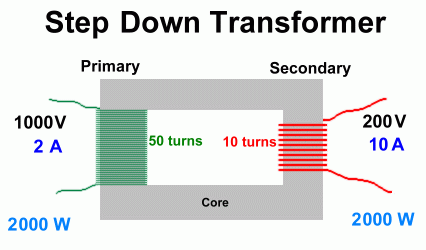)
A step down transformer is the type of transformer where the number of turns of wire on the secondary winding is smaller than the number of turns in the primary.
Ns < Np
In step down transformer, the secondary voltage is always smaller than the primary voltage.
But as you could see the power in this example (2000w) never changes.
See Articles Others Are Reading
- Study Abroad In Canada | See Top 10 scholarships To Study Abroad In Canada
- 2018 International Masters Scholarship at the University Of Oulu
- Fully funded Singapore International Scholarship 2019
- Fully Funded Duke University International scholarship 2019
- Kings College London International Scholarship
Transformer only changes current and voltage but never frequency and power (though there may be some power loss due to eddy current or I2R losses).
Step Up Transformer
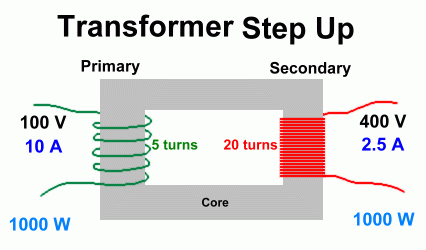)
In step up the primary winding is smaller than the secondary winding.
Np < Ns
The input primary voltage Vp is always smaller than the secondary voltage Vs
Isolation Transformer
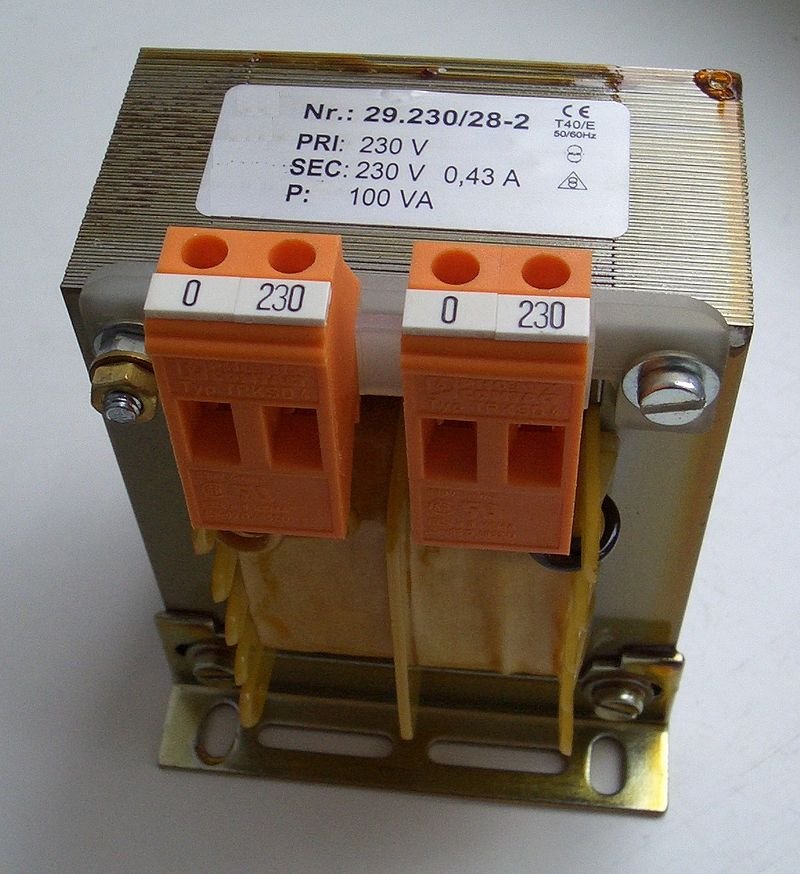)
It is important to mention another type of transformer known as isolation transformer. The ratio of the primary to secondary windings respectively is 1:1.
Theis means that both the number of turns in the primary winding Np is same as the number of turns of the secondary windings Ns.
The voltages too are the same. The transformers are used majorly for protection of secondary circuits and guard against electric shock for individuals plus interference block.
Uses of Transformers
The transformer has got a very wide application in both electrical and electronics systems. The functions of a transformer include:
- Electric Transmission: Electric power is generated in very distant location and needs to be sent to locations hundreds of km or miles away. Using a step up transformer, these voltages are stepped very high. In Nigeria, the transmission voltage is 330,000 volts (for the national grid).
But the generator terminal voltage of generating station is usually a fraction of that. For instance, Afam Power generating station in River State Nigeria, terminal generated voltage is 11,500Volts or 11.5KV.
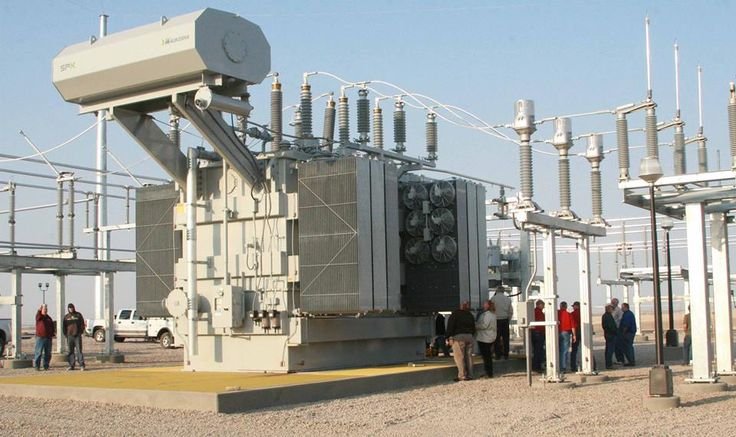)
A step up transformer now steps it to 330KV for transmission to neighbouring states.
The reason is high volatge requires a smaller size of cable (cutting cost of making large gauge wires) since the current would be small.
This also reduces losses over the great distances the electricity would have to transverse before getting to the consumers.
2. Electric Distribution: A step down transformer is needed for distribution of the high voltage coming in from the transmission station.
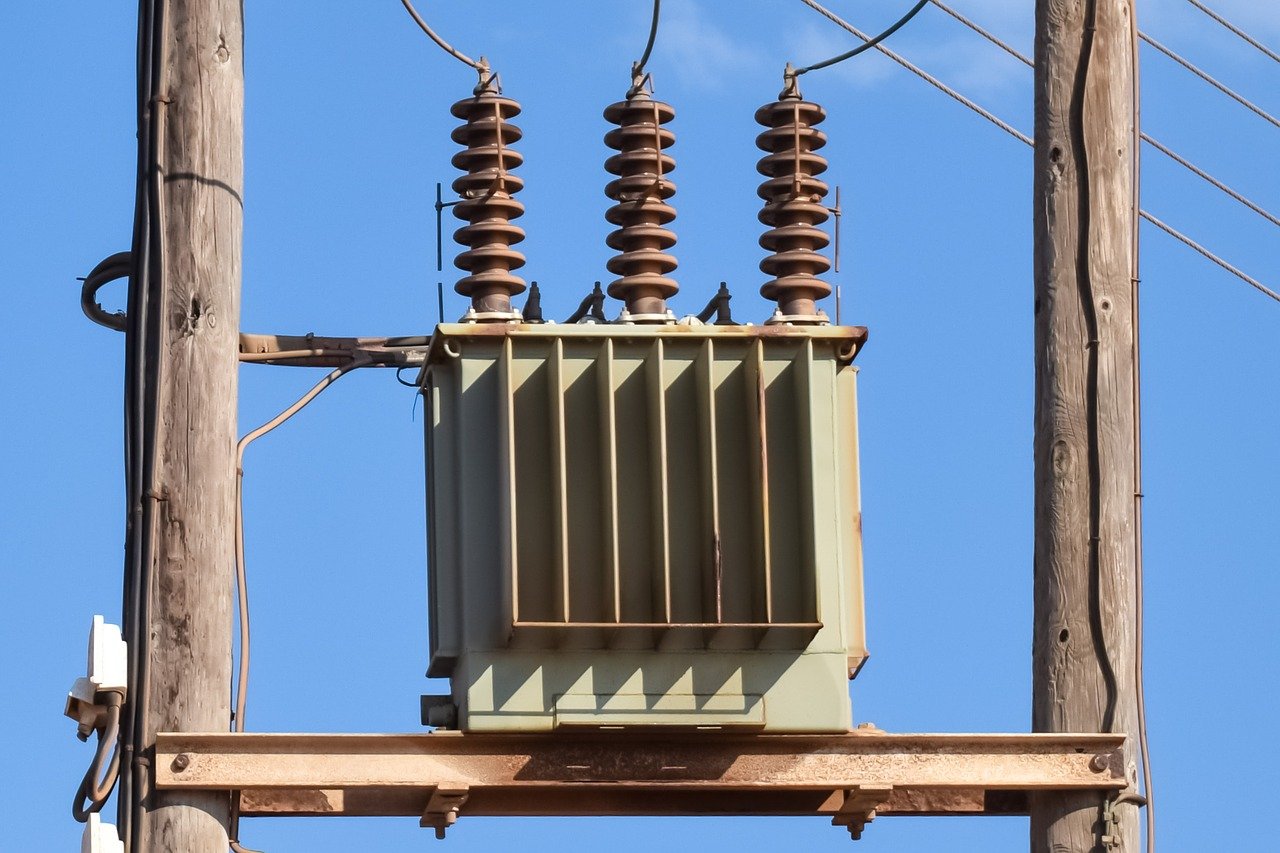)
These are the types you commonly see hanging from electric utility poles and besides street corners.
3. Protection: Isolation transformers protects us from dangerous voltages and isolates circuits from damage.
4. Measurements: We have different types of electrical measures. Examples include current, voltage, power, etc. So there are special transformers such as current transformers, potential transformers, etc.
5 Filter: A transformer could serve as a block or filter that prevents the direct current (DC) from passing a particular point since only alternating current (AC) could pass through the transformers.
These are some of the uses as this is not an exhaustive list just something for us to use to gain some insights on the transformer
That’s the much we can take on the topic “The Transformer And Its Importance In Electric Systems”.
Thanks For Reading
See Articles Others Are Reading
- Study Abroad In Canada | See Top 10 scholarships To Study Abroad In Canada
- 2018 International Masters Scholarship at the University Of Oulu
- Fully funded Singapore International Scholarship 2019
- Fully Funded Duke University International scholarship 2019
- Kings College London International Scholarship
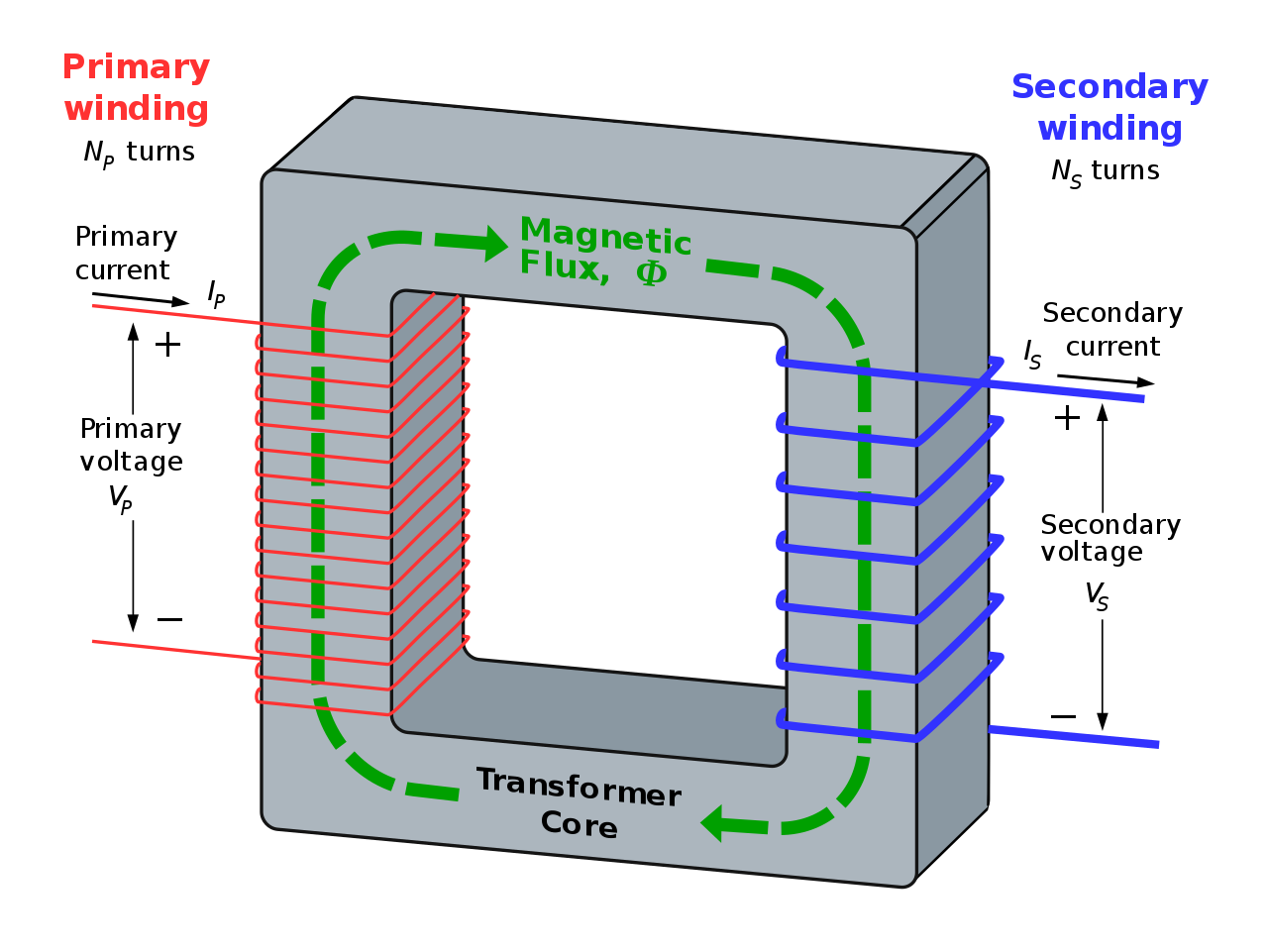
I like that you mentioned how a step-down transformer is needed for the distribution of the high voltage coming in from the transmission station. I was watching a documentary about the electrical distribution industry and one of its segments talked about how things work. It seems transformers are pretty important which is why there are companies nowadays that specialize in power transformers.